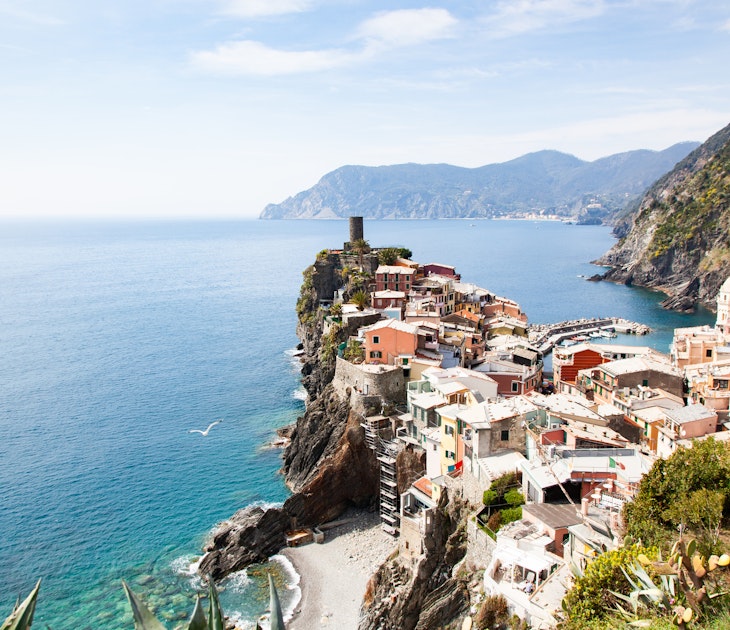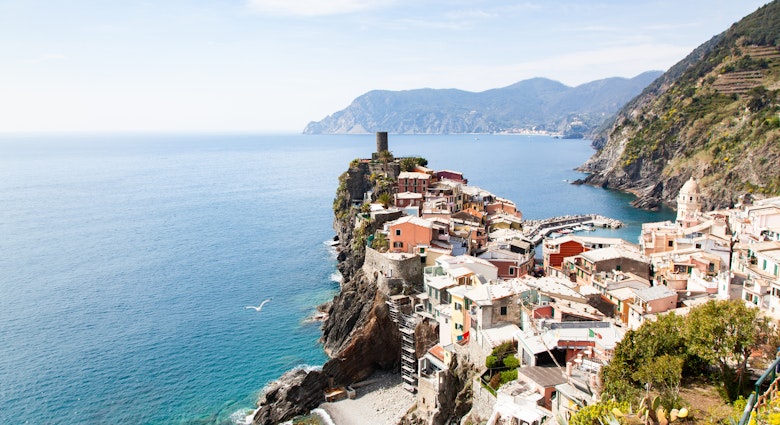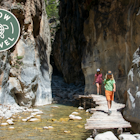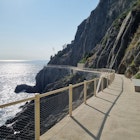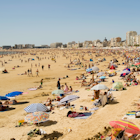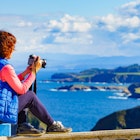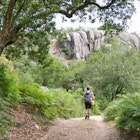Four wheels, two wheels, ferry or foot – in this extract from Lonely Planet's 1000 Ultimate Experiences, we show you how to best get the continent covered.
By Trabant, Berlin, Germany
This boxy, growling, two-stroke auto proliferated in the Eastern bloc pre-1989. When the Wall came down many easterners fled to the west in their 'Trabis', their transport to a new world. Now you can relive some of Berlin's most poignant moments in one of your own: guided fleets of spruced-up Trabants tour the capital, from Checkpoint Charlie to little-known ex-communist hangouts. Commentary is piped in from the lead car upfront while you steer your own piece of history.
By PostBus, Switzerland
A big yellow coach doesn't sound very glamorous, especially in a country bursting with elegant lake steamers, timely trains and vertiginous funiculars. But don't discount the humble PostBus. Operated by the Swiss mail system, these functional vehicles provide the missing link, connecting tiny or hard-to-reach communities that would otherwise be near impossible for carless travellers to access. Take Meiringen (where Conan Doyle dispatched Holmes over the nearby Reichenbach Falls): in summer the yellow bus squeezes along the narrow, 2200m Sustenpass to deliver letters and mountain-lovers to the town, a great base for striking out into the hills.
By canal boat, France
Life slows down on the waterways of France. Once all-important for transporting goods and connecting settlements, today canals are the peaceful back roads. Rent a houseboat and set off , mooring at pretty villages and negotiating an écluse (lock) or three – perhaps buying some homemade mustard from the enterprising lock-keeper as you pass. Most impressive is the 240km Canal du Midi linking the Med with the Atlantic, built in the 17th century to avoid Spain's pirate-infested waters. Gorge on cassoulet in Castelnaudary, creep through the Malpas Tunnel and explore Carcassonne's medieval splendour, all without exceeding 6km/h – slow travel at its best.
By train, everywhere
Rails have never been more romantic: a vast web of tracks spider the continent, linking evocative cities, delving courageously into mountain valleys and trundling out to rural backwaters. Chug from Parisian boulevard to German castle to Greek acropolis in a few short hops, discussing pop and politics with locals – though not at the expense of superlative window gazing. The ultimate journey is the Orient Express. Not the flashy (and pricey) tourist train – the original, though shortened, Orient Express service still runs under that name from Strasbourg to Vienna. Book a couchette for a historic (if jiggly) night's sleep.
By Vespa, Tuscany, Italy
Twisting, empty roads skirting rolling fields of vines and cypress trees, hilltop tumbles of houses and bell towers, and you – so chic as you glide by on a shiny Vespa. La dolce vita, indeed. Tuscan back roads are ideal for exploration on Italy's national vehicle: scooter-pace enables you to exchange buongiornos with passing farmers, to sniff wildflowers and maturing pecorino, and to delve into cobbled town centres, off limits to cars but accessible to two-wheeled travellers. String together wow cities such as Siena, Florence and Lucca with country detours; the lesser-known pootle between San Gimignano and Volterra is one of the best.
By ferry, Norway
It's taken millennia for Norway's coast – a succession of glacier-gouged fjords stretching up into the Arctic Circle – to look this good. Take to the water to appreciate the drama: 1300m-high rock walls, waterfalls and remote fishing villages can be accessed by ferries. For the full picture board one of the Hurtigruten fleet: coastal express boats delivering travellers, villagers, parcels and pickled herring to tiny communities along the serrated shoreline every day of the year, be it glorious midsummer or northern-lights-flashed midwinter. Disembark for hill hikes or simply watch the fjords float by.
By caravan, Ireland
There's something appealing about cramming into a gaily painted traditional Irish caravan, harnessing a stocky horse and rolling off across the Celtic countryside at a sedate 6km/h. These retro wagons have been trundling for 150 years – though today's nomadic Irish Travellers have 'upgraded' to lorry-pulled fiberglass versions, you can hire a curved-roof wooden replica. A few quick lessons in horse care (oats for one end, shovel for the other) and you're clopping along lanes, admiring loughs (lakes), finding deserted beaches and stopping off at pubs en route – for the craic, a Guinness and a dash to the loo (caravans are heavy on atmosphere, light on plumbing).
By foot, everywhere
Free, green and a good way to earn pizza/wurst/tapas credits, exploring by foot opens up any country's nooks and crannies. Get lost in the great cities: Parisian alleys, Roman backstreets and London parks all reward transport-shunning wanderers. On a grander scale, follow one of the continent's mammoth walking trails: there are 11 official long-distance routes. Try the E7, which snakes for 4330km from the Portuguese–Spanish border to Nagylak in Hungary. Or perhaps the E1 – 4900km through Sweden, Denmark, Germany and Switzerland to Italy. If you're serious about really seeing Europe, this is the way forward. Just pack comfy boots.
By bicycle, the Netherlands
The Netherlands: 20,000km of fietspad (cycle paths) and a high point of just 322m – possibly the perfect place to get on your bike. Take a spin alongside Amsterdam's canals, then head out into the countryside: wend between Friesland's interconnected lakes, investigate the polders and old-school fishing villages of Noord Holland or pedal through the forests and sheep fields of the Drenthe region, where hunebedden (ancient stone graves) lay scattered by the paths. To get away from it all (not easy in this densely populated nation) steer towards the Veluwe: villages are scarce, trees plentiful and wild boar and deer your cycle mates.
By sea-kayak, Croatia
There are more than 1000 islands scattered off the Adriatic Coast of Croatia, outcrops bearing olive groves, tavernas or uninhabited wilderness. Conveniently for paddling explorers, many are clustered close together, so it's possible for even beginners to glide from one to the next with relative ease. Just a 40-minute ferry ride from Dubrovnik's Old Town walls, you can be kayaking the Elafiti Islands: don't miss a glass of the locally pressed wine of Sipan and the beaches of Lopud. Or cast off in Kornati National Park, a cluster of 140 rugged islands, where there are more buzzards than people.
Want more unmissable adventures? Check out Lonely Planet's guide to the world's 1000 Ultimate Experiences.
